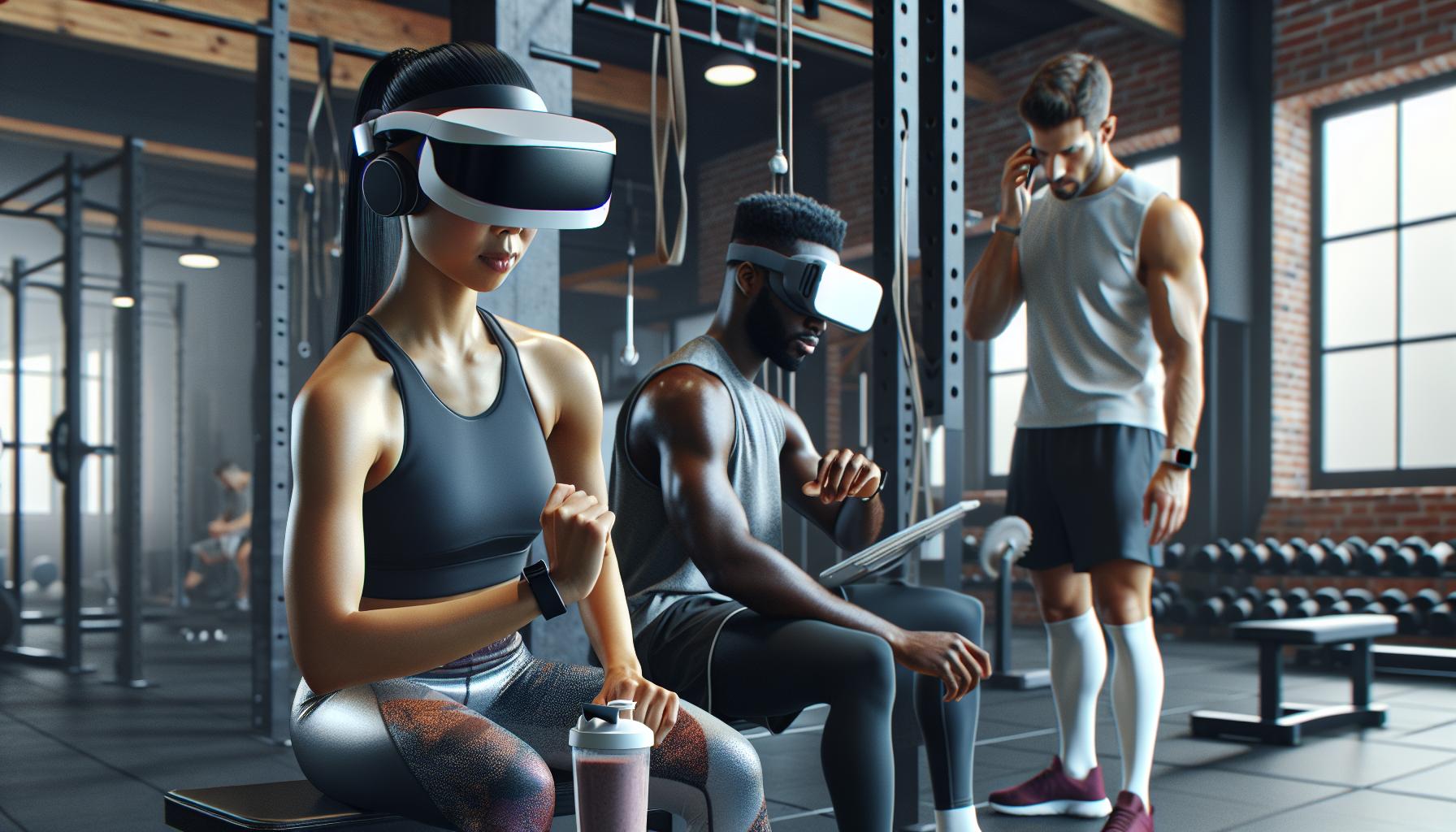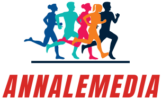In a world where couch surfing is an Olympic sport, understanding exercise and sport science isn’t just for the gym rats. It’s for anyone who wants to turn their “I’ll start tomorrow” into “I did it today!” This fascinating field dives deep into how our bodies move, adapt, and sometimes protest when faced with a good workout.
Exercise and Sport Science
Exercise and sport science encompasses the study of physical activity and its effects on human health, performance, and well-being. This field integrates various disciplines, including biomechanics, physiology, psychology, and nutrition.
Definition and Scope
Exercise and sport science focuses on understanding the body’s responses to physical activity. It includes the study of exercise physiology, which examines how muscles and organs function optimally during activity. Biomechanics analyzes movement patterns to enhance performance and reduce injury risk. Moreover, sport psychology addresses mental aspects crucial for athletes in achieving peak performance. This multidisciplinary approach helps in developing effective training programs and rehabilitation strategies.
Importance in Modern Society
The relevance of exercise and sport science in today’s society cannot be overstated. Knowledge gained from this field promotes healthier lifestyle choices among individuals. More people recognize the necessity of regular exercise for maintaining physical health and mental well-being. It also plays a significant role in athletic training, enhancing performance in competitive sports. Furthermore, sports scientists contribute to public health initiatives by encouraging community engagement in physical activities, thereby helping to combat sedentary lifestyles and chronic diseases.
Key Disciplines within Exercise and Sport Science

Various disciplines contribute to the comprehensive understanding of exercise and sport science. These fields work together to analyze human performance and health in physical activity contexts.
Exercise Physiology
Exercise physiology focuses on the body’s responses to physical activity. This discipline examines how muscles, cardiovascular systems, and metabolic processes adapt during and after exercise. It helps in understanding limits of endurance, recovery, and how to optimize training regimens for improved performance. Many professionals in this field develop personalized fitness programs based on individual physiological responses. Research continually explores aspects like energy expenditure, muscle hypertrophy, and adaptations to different training modalities.
Sports Psychology
Sports psychology addresses the mental challenges athletes face during competitions and training. It explores motivation, focus, and self-confidence, essential elements for peak performance. Professionals in this field implement techniques to enhance mental resilience and reduce anxiety. The relationship between an athlete’s mindset and performance outcome is critical, influencing how athletes cope with stress and pressure. Engaging with psychological strategies can significantly improve an athlete’s ability to train and compete effectively.
Biomechanics
Biomechanics analyzes human movement through mechanics and physics principles. This discipline evaluates body movements during various sports and activities, aiming to improve technique and prevent injuries. Motion analysis software often measures variables such as speed, force, and joint angles to inform performance enhancements. By understanding the mechanics involved, professionals can optimize athletic techniques and design better rehabilitation programs. Insights from biomechanics significantly contribute to both competitive sports and rehabilitation practices.
Current Trends in Exercise and Sport Science

Exercise and sport science increasingly integrates innovative practices to enhance athlete performance and promote overall health. These trends reflect advancements that address the evolving needs of fitness enthusiasts and professionals alike.
Technology in Training
Wearable devices revolutionize training regimens by providing real-time data on heart rate, movement, and recovery. Athletes leverage applications to track progress, customize workouts, and communicate with coaches. Virtual reality training tools enhance engagement, allowing participants to simulate various athletic environments. Additionally, performance analytics software offers insights into biomechanics for optimizing techniques and preventing injuries. These technological advancements streamline training processes, making performance more measurable and achievable.
Nutrition and Performance
Evidence shows that proper nutrition significantly impacts athletic performance. Athletes increasingly focus on specific dietary strategies tailored to their training needs. Nutrient timing becomes crucial, with many consuming carbohydrates and proteins to fuel workouts and aid recovery. Supplements, including omega-3 fatty acids and branched-chain amino acids, gain popularity for their potential benefits. Moreover, hydration strategies during competitions receive attention, emphasizing optimal fluid replenishment for peak performance. Recognizing these nutritional factors enhances athletes’ capabilities, paving the way for improved results.
Impacts of Exercise on Health

Exercise promotes numerous health benefits, influencing both physical and mental well-being significantly.
Physical Well-Being
Regular physical activity reduces the risk of chronic diseases such as heart disease and diabetes. It strengthens the cardiovascular system and enhances muscle strength and endurance. An increase in metabolic rate occurs, assisting in weight management and fat loss. Exercising consistently improves bone density, which is crucial for preventing osteoporosis, particularly in older adults. Enhanced immune function results from engaging in regular workouts, leading to fewer illnesses. Research supports that individuals who exercise experience better sleep quality, contributing to overall health.
Mental Well-Being
Improved mental health attributes to regular exercise involvement. Physical activity triggers the release of endorphins, often called “feel-good” hormones, which help in alleviating stress and anxiety. Enhanced cognitive function occurs with consistent exercise, leading to better focus and memory. Regular workouts foster resilience, making it easier for individuals to cope with challenges. Participation in group sports or fitness classes also promotes social interaction, further enhancing feelings of happiness and belonging. Studies indicate that those who engage in exercise experience lower symptoms of depression, making it a crucial component of mental well-being.
Future of Exercise and Sport Science
The future of exercise and sport science looks promising, driven by innovation and emerging research. New discoveries continually enhance understanding of human movement and training responses.
Emerging Research Areas
Artificial intelligence and machine learning are becoming integral to exercise and sport science. These technologies help analyze large data sets, assisting in personalized training programs. Another area gaining attention is the study of epigenetics, which explores how lifestyle factors affect gene expression related to fitness and performance. Additionally, investigations into the gut microbiome suggest a connection between gut health and athletic performance. The role of recovery and its physiological impacts draws considerable interest, focusing on optimizing rest, nutrition, and sleep for enhanced performance. Researchers are also examining the psychological aspects of training, particularly the mental resilience required for high-level performance.
Career Opportunities
Career opportunities in exercise and sport science expand as interest and research grow. One option includes becoming a sports performance coach, focusing on improving athlete performance through tailored training. Another path is clinical exercise physiology, where professionals develop exercise programs for those with chronic diseases. Nutritionists specializing in sports nutrition provide dietary guidance to athletes. Additionally, athletic trainers support injury prevention and rehabilitation. Opportunities in fitness technology, including roles in data analysis and wearable tech development, also thrive. Each role supports the continuing evolution of exercise and sport science in various sectors.
Future of Sport Science
Understanding exercise and sport science is essential for anyone seeking to improve their health and performance. This field not only enhances physical capabilities but also addresses the mental challenges athletes face. With the integration of technology and innovative practices, the future looks promising for advancements in personalized training and recovery methods.
The benefits of regular physical activity extend beyond fitness, impacting overall well-being and reducing the risk of chronic diseases. As interest in this multidisciplinary field grows, so do the career opportunities, allowing professionals to make significant contributions to public health and athletic performance. Embracing the principles of exercise and sport science can lead to healthier lifestyles and a deeper understanding of the body’s capabilities.

